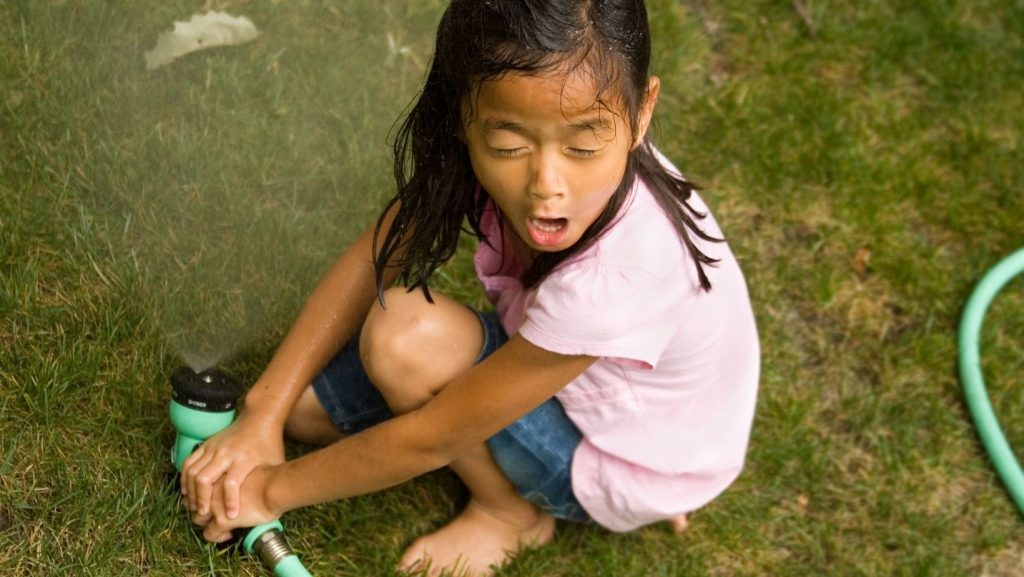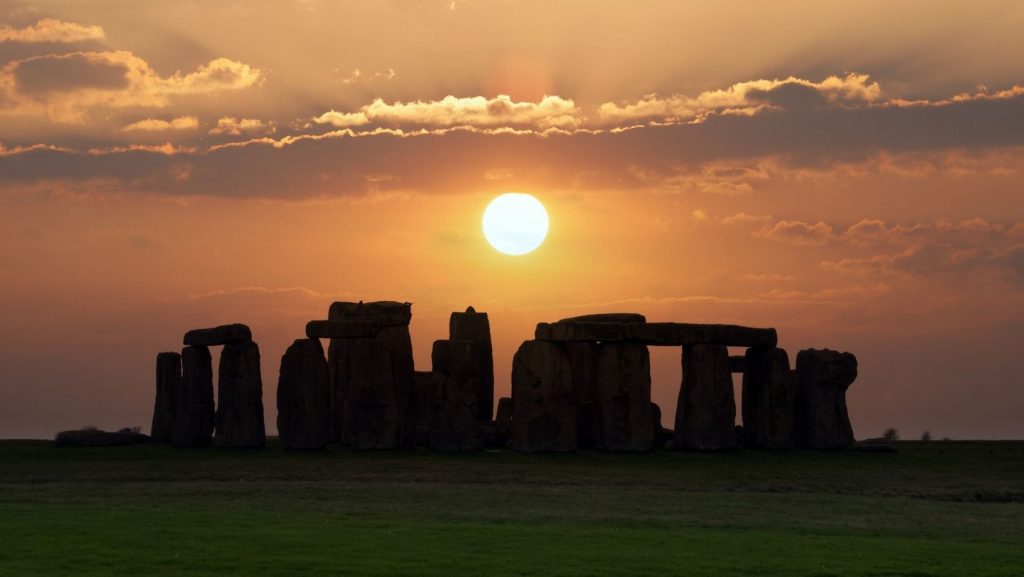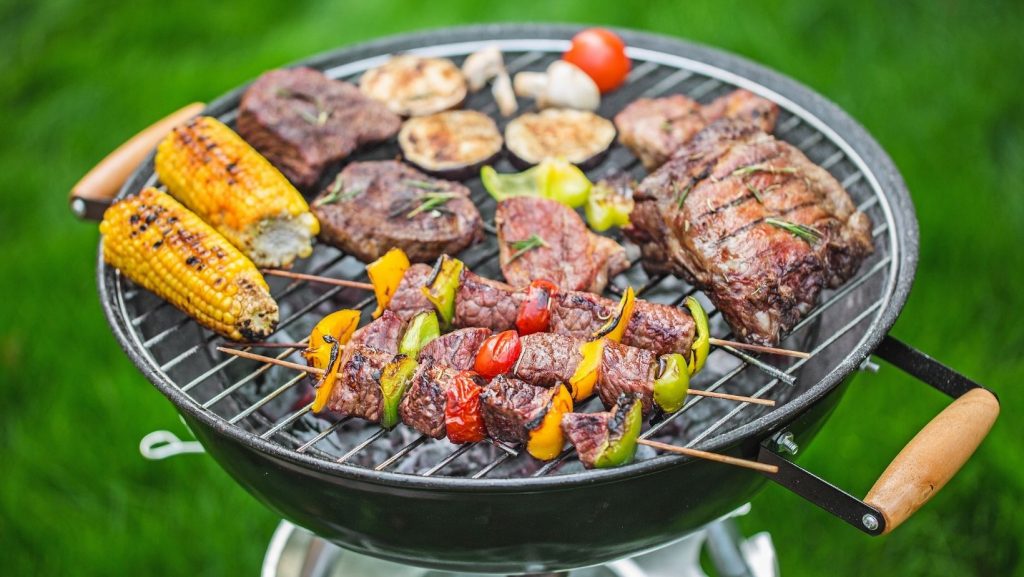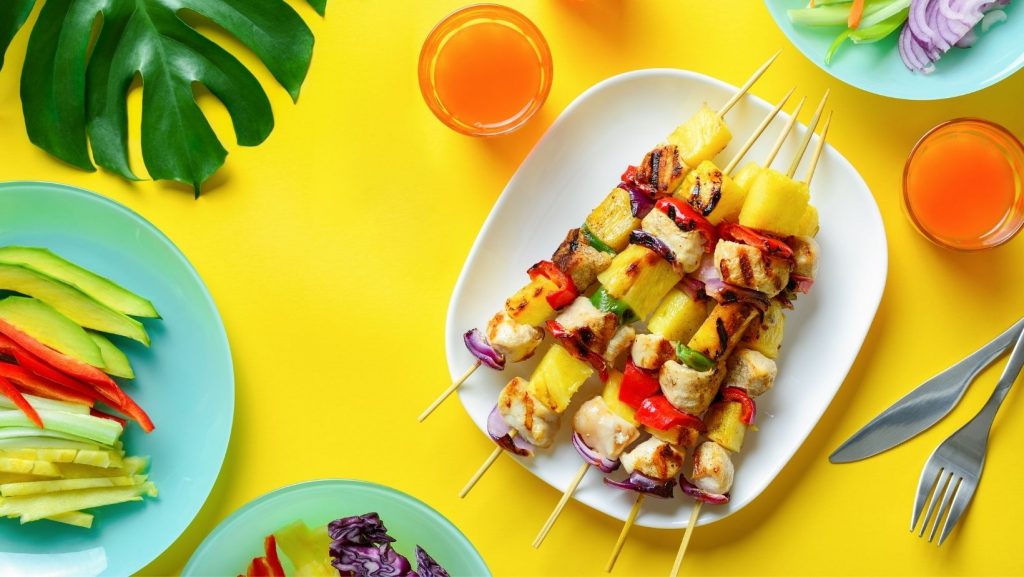
Summer Unit Study and Badge Resources
August is on its way and with it some hot summer weather! What better badge to earn than our Season (specific) badge for Summer. Use the summer unit study below to learn the science behind the season as well as do some fun summertime activities. Other fun badges you may wish to earn alongside include Water Games, Swimming, and Weather.
What is Summer?
Summer is the warmest season of the year, in the northern hemisphere it runs from June to August on a calendar and in the southern hemisphere from December to February. When it is summer in California it is winter in Australia. When Australia has its summer heat, we have our winter cold.
Each season has both an astronomical start and a meteorological start date. The astronomical start date is based on the position of the Sun in relation to the Earth. The meteorological start date is based on our 12-month calendar as well as the annual temperature cycle. June 1 is the meteorological start date for summer in the northern hemisphere while the summer solstice is the meteorological start date. This year the meteorological start date was June 20. Next year, 2022, the meteorological start date will be on June 21. The exact day changes slightly year to year due to leap years. You can get more details on the seasons on the Farmers Almanac website.
To Do: Demonstrate how the heat of the sun is more direct and intense in the summer and is indirect and less intense in the winter. Take a flashlight, turn it on and hold it straight up and down about 4 inches over a table. If you are using an incandescent bulb, you can even put your hand under it to feel the heat. When the sun shines directly on the hemisphere during summer it is much like the direct light of the flashlight. Now tilt the flashlight to one side. Notice how the light is suddenly less intense. If you put your hand where the light is, there is very little heat. This shows how the angle of the earth to the sun can cause hotter or cooler temperatures.
To Do: Choose 7 different countries, one from each continent. Create a graph that shows the average temperature for each month of the year for each country. Can you tell at a glance from the graph which countries are in the northern hemisphere and which are in the south? The farther your chosen countries are from the equator the more of a difference you will see. How does the summer season in each of these countries differ than your own community?
Fulfills Level 1 requirement #2 and optional requirement #11

Summer Time Weather
In addition more daylight hours during the summer, we also get more heat. Summer weather can vary greatly depending on where you live. Redding, California has very hot, but very dry summer days while Tampa, Florida has high humidity and can see several inches of rain.
To Do: Keep a weather log for at least one week. Every day record the following information:
- Temperature
- Humidity
- Cloud type
- Wind speed and direction
- Rain fall
Do you live in an area where summer weather is fairly consistent day-to-day? Or do you get sun one day and thunderstorms the next?
To Do: Play a summer time clothing game. Place the following items in a large bag for each team. Make sure they are large enough for all the kids to fit into.
- winter coat
- bathing suit
- shorts
- long heavy pants like corduroys, jeans, or snow pants
- snow boots
- flip-flops
- tank top
- turtle neck shirt
- warm knit hat
- sun hat
On go, the first member of each team races to the bag and pulls out all the items. They must put on ALL the summer time apparel and none of the winter. Once fully dressed they may remove all the items and put everything back in the bag. Then they run back to their team and tag the next person who repeats the process. The first team done wins.
Fulfills preschool requirement #1, Level 2 requirement #2

Summer in My Community
Summer effects each community a little bit different. For agricultural communities, it effects what crops can be grown. For tourist areas, it can effect traffic and the number of people in your restaurants or on your beaches.
To Do: Make a list of the different way summer effects your local community. Are certain businesses only open in the summer? Are there more people visiting your area? Does it effect traffic? How about trash? Do you notice more trash on the ground during summer months? Are certain fruits and foods only available in the summer? Why do you think these things are different in the summer than the winter?
To Do: Learn about a seasonal job in your community. This might be a holiday retail position, a seasonal agricultural position, or even a summer lifeguard. How old do you have to be to apply for this position? What experience do you have to have? What does it pay? How long do you work?
Fulfills Level 3 requirement #2 and Level 4 requirement #2
Summertime Art
Summertime is a great time to be creative as you can get outside as well as do traditional indoor arts. For example summertime is a great time to learn to sculpt sand castles or make water shadows. When creating colorful works of art, what colors do you usually think of that represent summer?
To Do: Create a piece of artwork or a craft that represents summer to you. A few examples might include:
- Rock painting – Find a collection of smooth stones. Wash and dry them well. Paint summer pictures or words on them. Once dry, seal with clear acrylic. For tips on rock painting visit Rockpainting101.com
- Learn how to sand sculpt: – watch the video above for an easy tutorial from Sandstorm Events.
- Water imprints: Lay out leaves or shaped objects on a driveway or pavement area. Use a spray bottle to spray water all over and around them. Then gently lift and move the objects to reveal a “shadow.” Use your objects to create pictures when sprayed. You can also reverse the process and dip things in water and then “stamp” them onto the dry ground. Wet footprints can be used to paint quick pictures.
- Do some summer arts and crafts. Good Housekeeping has a list of 35 different crafts to choose from.
Fulfills an optional requirement

Cooling Off!
Summer means hot weather. When playing or doing activities outdoors it is easy to get over heated and finding ways to stay cool in the summer can be a lot of fun. Not everyone has access to a pool or a lake, but there are plenty of ways to cool off using hoses, sprinklers, water balloons, and even sponges.
To Do: Find a unique and fun way to cool off this summer. If you are swimming in a pool, play a water game. If you have a lawn in your backyard, have a water balloon fight. If you need ideas, check out our Water Games unit study which has a variety of water fun activities.
Fulfills optional requirement 7

Ancient Myths
In ancient times, before scientists figured out how solar system worked, the changing season were explained via religion or myths. Here are a few to give you an idea of how ancient civilizations explained the natural seasons.
Greek Mythology – Seasons are explained in the story of Persephone who spends half her time with her mother Demeter, goddess of the harvest, and half her time with Hades in the underworld. During spring and summer, Persephone was by Demeter’s side and the harvest was allowed to thrive. In fall and winter, Persephone was with Hades, which would cause Demeter to become depressed and the world to become cold and dark.
Chinese Mythology – Seasons are explained by the breathing of the Candle Dragon. According to Ancientpages.com, “The Candle Dragon was mighty; he neither ate nor drank nor slept. He winked and winked, and days and nights occurred alternately. His breath produced strong winds and terrible torrential rains; once he blew, there would be winter in a second with the sky filled with black clouds and heavy snow storms; once he sniffed, there would be midsummer in no time with scorching sun that could even melt the stones.”
Acoma Native American Mythology – Seasons are explained by a battle between the Spirit of Winter and the Spirit of Summer for a woman named Co-chin. Co-chin starts off married to Winter, but she doesn’t like him because he’s cold and his presence in her village kills all of the corn. When Summer and Winter battle, neither really wins (though Summer gets the girl), and they decide to each rule for half the year. You can read the full legend on the FirstPeople.us website.
To Do: Make up a myth of your own explaining why the seasons change, and focus on creating a story explaining what happens during summer specifically.
Fulfills optional requirement #17

Summer Recipes
Summer time brings to mind outdoor BBQs, picnics, and cooking over a campfire. Simple fresh fruit salads, hotdogs and hamburgers on the grill, or gooey smore’s with melted chocolate are all summer time staples. Some recipes are considered summer recipes because the ingredients are only fresh in the summer. Other recipes are considered summer recipes because they are cooked outdoors so the weather must be enjoyable. Still others may be summer recipes simply because they are light and cool such as salads or iced tea.
To Do: Make something typically eaten during the summer in your area. Serve it to your family, friends, or group. Why is this dish/recipe/meal typically eaten during this season? Levels 1-2: make one dish. Level 3: make two dishes. Levels 4-5: make an entire meal
Here are a few simple recipes to get you started.

Fruit Pizza
- Watermelon
- Blueberries
- Black berries
- Mint leaves
- Block of white chocolate
Cut the watermelon into 1″ rounds. Then cut each round into 8 slices like you would a pizza. Top each piece with a few berries and a mint leaf. Then finely grate white chocolate over the top.

Deviled Eggs
- 6 large hard boiled eggs
- 3 TBSP Mayonnaise
- 1 Tsp Dijon mustard
- 1 Tsp apple cider vinegar
- salt and pepper to taste
- Paprika for garnish
Peel the eggs and slice them lengthwise. Scoop out the yolks and place them in a bowl. Arrange the whites on a plate or platter. Add the mayonnaise, mustard, vinegar, salt and pepper to the yolks and mash with a fork until smooth. Place a spoonful of the mixture back into the hole of each egg white and then sprinkle some paprika on top for a garnish.

Chicken Pineapple Kabobs
- 1/4 cup olive oil
- 1/4 cup pineapple juice
- 2 cloves garlic, minced
- 1 tablespoon soy sauce
- 1 teaspoon salt
- 1 teaspoon ground black pepper
- 1 1/2 pounds chicken thighs, cut into 1-inch pieces
- 1 pineapple, peeled and chopped into 1-inch pieces
- 1 green bell pepper, chopped into 1-inch pieces
- 1 red bell pepper, chopped into 1-inch pieces
- 1 red onion, chopped into 1-inch pieces
Whisk together olive oil, pineapple juice, garlic, soy sauce, salt, and pepper. Place chicken in a large ziplock bag or a bowl. Pour the marinade over the chicken and stir to coat. Let marinate for 20 to 30 minutes, or overnight. If using wooden skewers, soak them in water.
Thread the chicken and vegetables on to the skewers. Try to have a piece of pineapple touching each piece of chicken to keep the meat moist.
Heat your grill to medium high heat and brush with oil to ensure your kabobs don’t stick. Add the kabobs and let them grill for 5 to 6 minutes per side, until they get a nice char on them. Flip every few minutes after that until the chicken reaches 165 degree. Total grilling time is usually around 15-18 minutes.
Fulfills optional requirement #16
Follow our Facebook page for badge of the week posts and other resources. For planning purposes you can see which badges will be featured on our badge of the week calendar. You can also sort and search articles by topic on our main blog page. If you are not already a member, check out our membership pricing page.






One Response